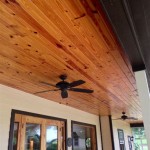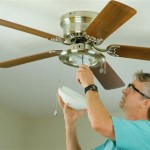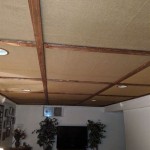Popcorn ceilings, or acoustic ceilings, were popular in the 1970s and 80s, but today, many homeowners find them outdated and unattractive. If you’ve decided to update your home and replace your popcorn ceiling, you’ll want to arm yourself with the right knowledge and materials to get the job done correctly. This article will cover everything you need to know about replacing a popcorn ceiling.
Safety First
When replacing a popcorn ceiling, safety should be your first priority. This means that you should take the necessary precautions to protect yourself and your family from asbestos. Popcorn ceilings were made with asbestos-containing material prior to 1979. If your popcorn ceiling was installed before 1979, it is essential that you have it tested for asbestos before you begin the replacement process. If the test comes back positive, you’ll need to secure the services of a professional abatement contractor to safely remove the asbestos before you can continue with the replacement.
Preparing to Replace
Once you’ve ensured that your popcorn ceiling is asbestos-free, you can begin with the preparation process. First, you’ll need to cover any furniture, flooring, and walls with drop cloths. Next, you’ll need to turn off any electrical power in the room, and remove any light fixtures or smoke alarms that are attached to the ceiling. It’s also a good idea to patch any cracks in the ceiling before you begin the replacement process.
Removing the Popcorn Ceiling
The next step is to remove the popcorn ceiling. This can be done with a garden sprayer, a putty knife, and a vacuum. Fill the garden sprayer with water and spray the ceiling until it is completely saturated. The popcorn texture will start to loosen, and you can then scrape it away with the putty knife. Make sure you’re scraping with the grain of the popcorn texture to avoid damaging the drywall. Once you’ve removed the popcorn texture, you should vacuum the ceiling to remove any remaining debris.
Repairing the Ceiling
Once the popcorn texture has been removed, you may need to repair any damage that was done to the drywall. If there are any holes, use a drywall patch kit and follow the instructions on the package. If there are any cracks or other minor damage, you can use joint compound and a putty knife to fill them in. Once the repairs are complete, you should sand the ceiling to ensure a smooth surface.
Painting the Ceiling
Once the ceiling is repaired and sanded, you’re ready to paint. You should use a high-quality interior paint, and you may want to use a roller and an extension handle to make the job easier. Start by priming the ceiling, and then apply two coats of paint. Make sure you allow each coat to dry completely before applying the next.
Finishing Touches
Once the painting is complete, you can add any additional touches you’d like, such as crown molding or a decorative edge. Finally, you can replace any light fixtures or smoke alarms that you removed before starting the project.
Replacing a popcorn ceiling can be a big job, but with the right knowledge and materials, you can do it yourself and give your home a fresh, updated look. This article has provided you with all the information you need to know about replacing a popcorn ceiling, so you can get started on your project today.















Related Posts








